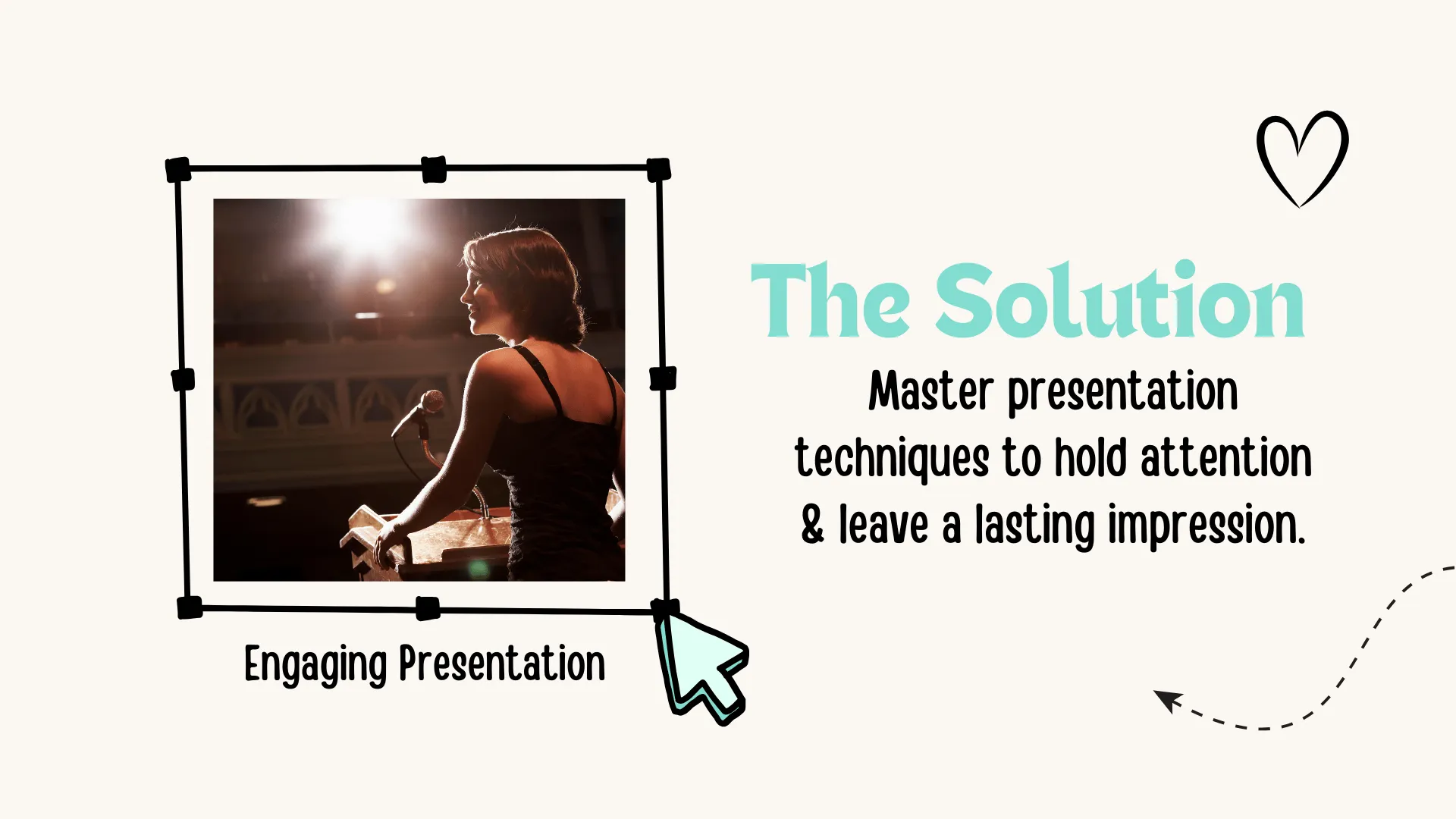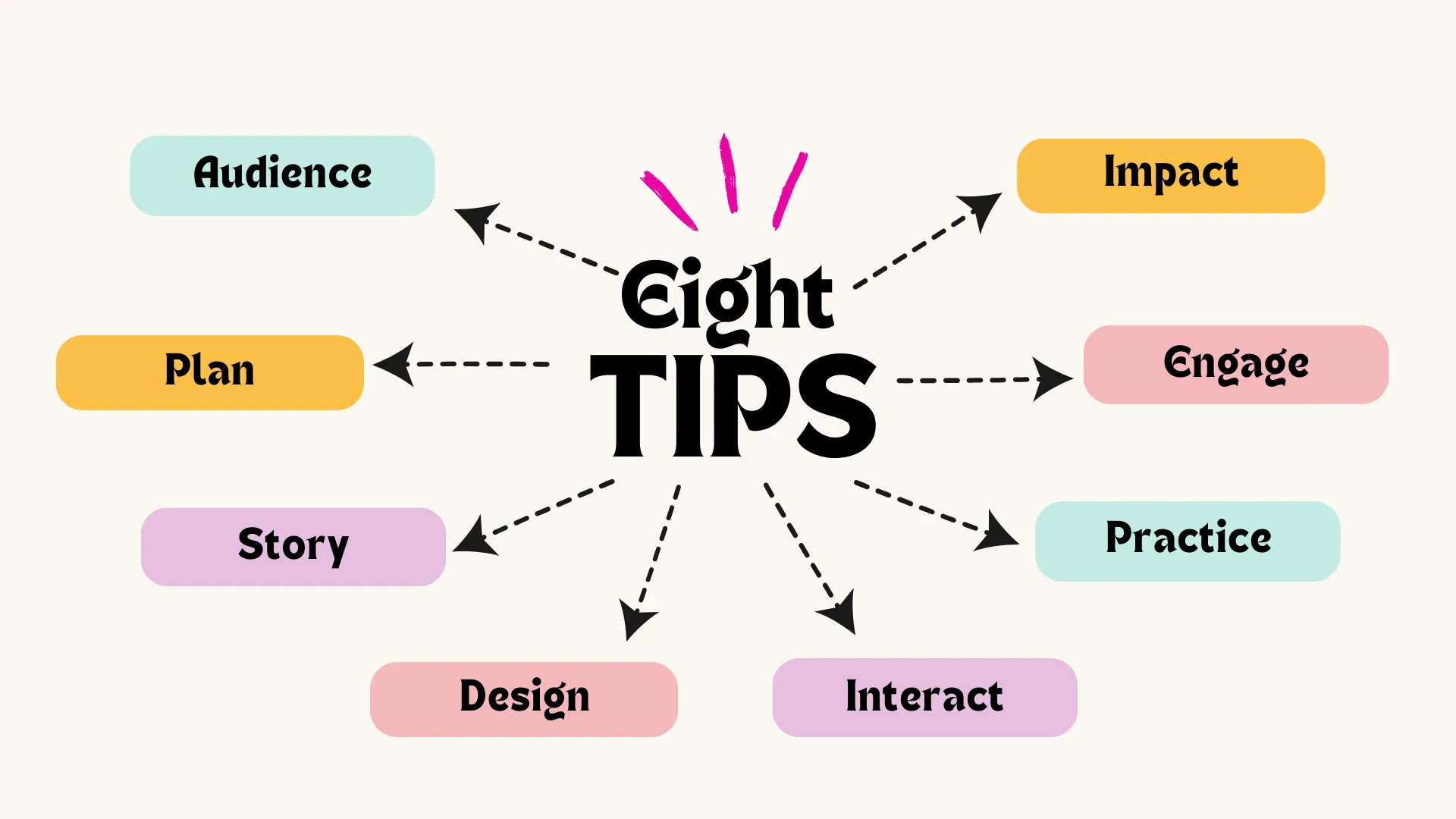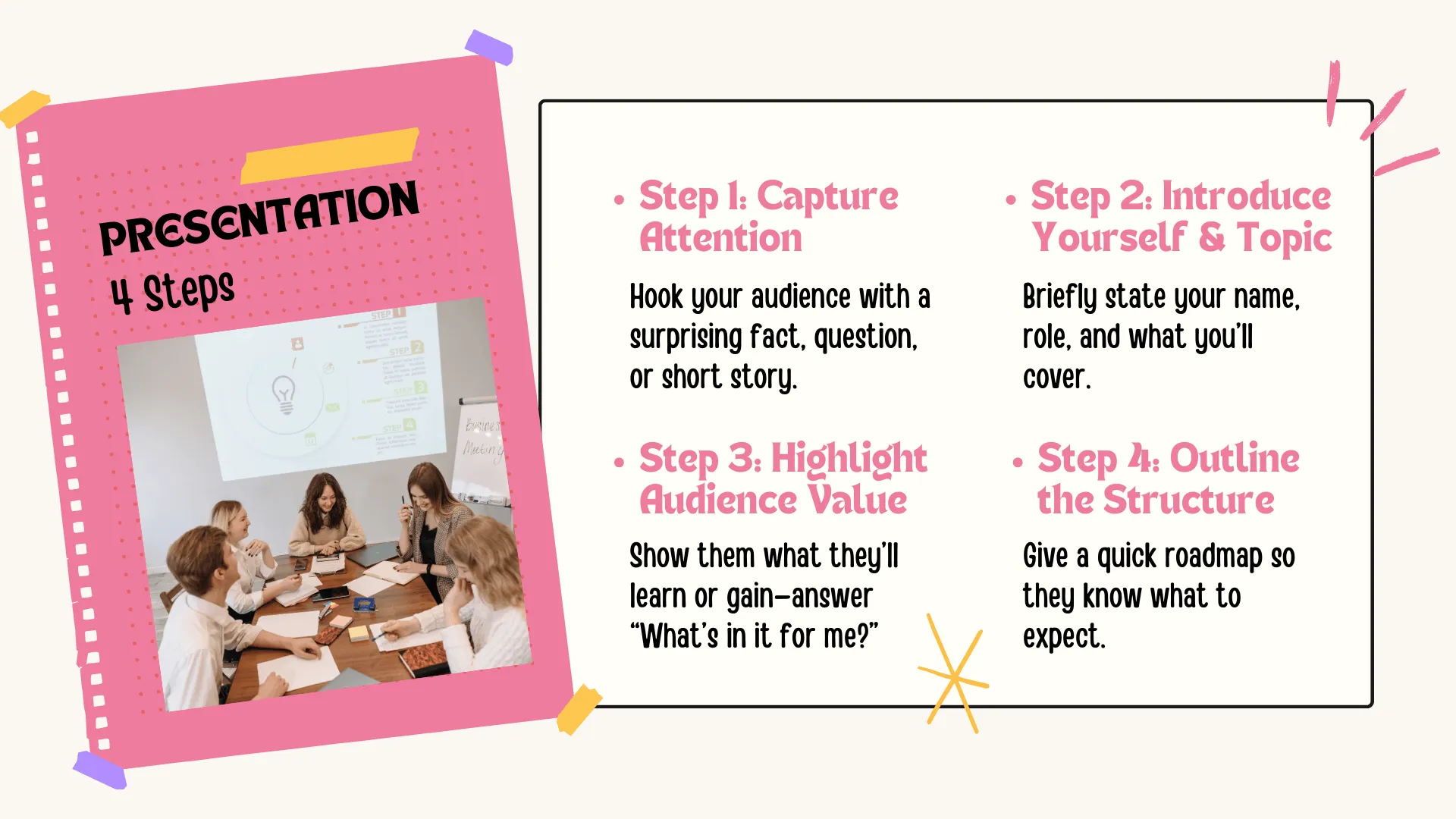
Why Your Presentation Needs to Grab Attention
Did you know that nearly 80% of audiences lose focus within the first 10 minutes of a presentation? Imagine pouring hours into your slides, only to have your audience zone out before you even get to the good part. Frustrating, right?
That's why mastering the right presentation techniques is so important. An engaging presentation doesn't just hold people's attention—it helps your message stick and leaves a lasting impression long after you've wrapped up.

In this blog, I'm going to share 8 practical presentation tips on how to create an engaging presentation. Whether you're just starting out or you've been presenting for years, these strategies will help you make every slide more impactful, memorable, and persuasive.
Tips to Make Your Presentation Engaging
An effective presentation isn't just about reading off your slides. It's about preparation, connecting with your audience, and sharing your message in a way that actually sticks. Over the years, I've learned that the best presentations feel more like conversations than lectures.
Here are 8 practical presentation tips and techniques you can start using right away to make your next presentation more engaging, memorable, and impactful:

1. Know Your Audience
Why should you shape your presentation around your audience? Simple—it's the fastest way to keep people interested. When your content speaks directly to their needs and interests, they'll pay closer attention and actually remember what you're saying.
Even better, when they feel the information is personally relevant, they're more likely to take action. A presentation that resonates with your audience is more powerful, persuasive, and memorable. This really is the first step in learning how to create an engaging presentation.
2. Plan and Structure Your Content
Great presentations don't happen by chance—they're carefully structured. Think of it like telling a story: start with a strong opening that grabs attention, build your case in the middle, and wrap up with a conclusion that leaves a lasting impression.
Smooth transitions between sections help your audience follow along without getting lost. With these simple presentation techniques, your message will flow naturally and feel much easier to digest.
3. Use Stories to Make Your Content Memorable
Cold facts rarely move people—but a good story does. A short anecdote, case study, or personal experience can turn abstract ideas into something real and relatable.
Narratives highlight key points in a way that sticks, and they also invite your audience to connect the dots with their own experiences. That's why storytelling has always been one of the most powerful presentation techniques out there.
4. Create Visually Appealing Slides
Your slides should support your talk, not distract from it. Keep the design clean, stick to a consistent theme, and use high-quality visuals instead of walls of text.
When your visuals complement your message, your audience is much more likely to follow along and actually retain what you're saying. Trust me, a well-designed slide deck can completely transform your presentation.
5. Add Interactive Elements
The quickest way to lose an audience is to make them sit in silence. Add a poll, quiz, or quick Q&A session to keep people engaged. These little interactions break the monotony, refocus attention, and make the whole experience more dynamic.
This is the secret behind an interactive presentation—and it works wonders for keeping your audience involved from start to finish.
6. Practice Confident Delivery
Even the best slides won't save a weak delivery. Confidence is contagious, and it shows in your tone, your eye contact, and your body language.
Practice enough so you're not glued to your notes, cut down on filler words, and let your delivery flow naturally. When you feel comfortable on stage, your audience will feel comfortable listening to you.
7. Keep Communication Going Throughout
Don't save all the interaction for the Q&A at the end. Instead, engage your audience as you go—ask questions, invite comments, or recap key points along the way.
This ongoing interaction keeps attention levels high and makes your presentation feel more like a two-way exchange. If you've ever wondered how to create an engaging presentation, this is one of the most effective techniques.
8. End with Impact
Your closing is what your audience will take with them, so make it count. Summarize the big takeaways and leave a clear call-to-action—whether it's “try this technique in your next meeting” or “download the slides for reference.”
Don't be afraid to invite feedback, questions, or follow-up conversations. A strong conclusion makes your message stick and leaves your audience with something to act on.
How to Start a Presentation Step by Step
The opening of your presentation can make or break the entire experience. A strong start captures attention, builds trust, and sets the stage for everything that follows. Here are four simple but powerful steps to kick off your presentation the right way:
Step 1: Capture Attention
Start with something that hooks your audience right away—a surprising statistic, a thought-provoking question, or even a short story. This immediately sparks curiosity and shifts the focus to you. It's one of the most tried-and-true presentation techniques for setting the right tone.
Step 2: Introduce Yourself and the Topic
Keep your introduction short and to the point. State your name, your role, and the topic you'll be covering. You don't need to go into a full biography—just enough to establish credibility and let people know exactly who you are and what you're about to share.
Step 3: Highlight the Value for the Audience
Your audience is quietly asking themselves: “What's in it for me?” Address this right away by telling them what they'll learn or gain from your presentation. When people see the value, they're more motivated to pay attention and follow along. This is a cornerstone of how to create an engaging presentation.
Step 4: Outline the Structure
Give your audience a quick “roadmap” of what's coming. A simple breakdown of the sections helps them track your message and reduces cognitive load.

Here's where tech can really help—tools like Smallppt's AI slideshow makercan instantly generate a polished opening slide and a clear outline, making your start look professional and well-structured without hours of manual work.
Turn These Tips Into Action
We've covered some core presentation techniques—understanding your audience, structuring your message, using stories, visuals, and interactivity. These simple methods show exactly how to create an engaging presentation that sticks.
And the best part? With AI PowerPoint maker like Smallppt, you can quickly build slides that look polished and engaging, so you can focus on delivering your message with confidence.


